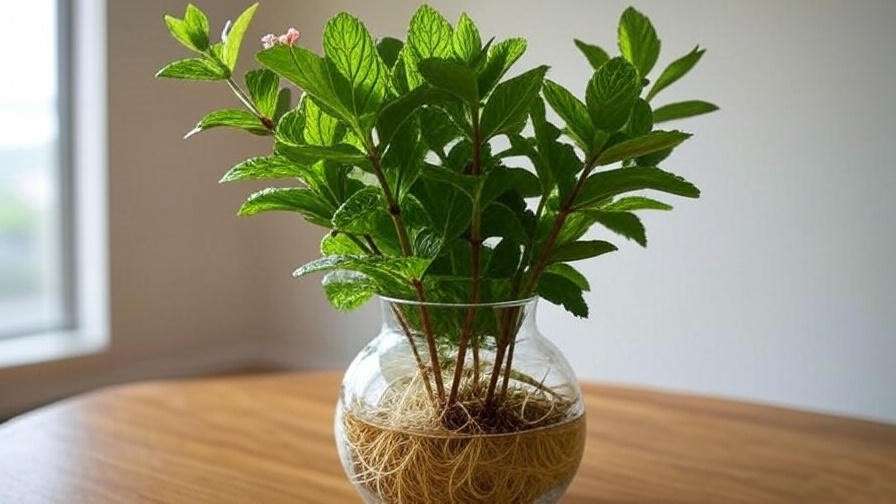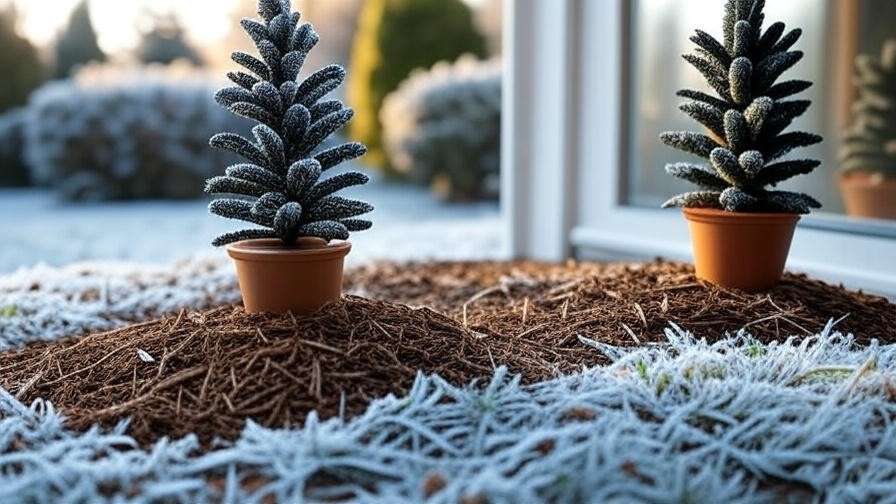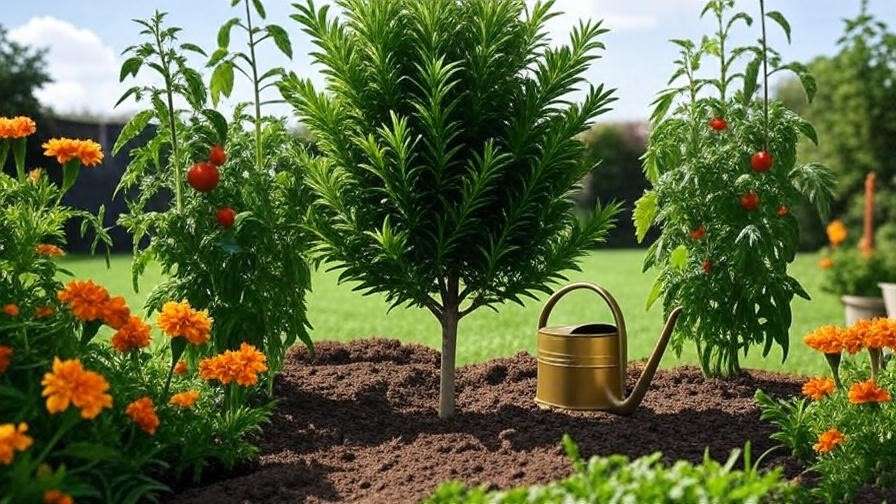Imagine stepping into your garden and being greeted by the rich, chocolatey aroma of a chocolate mint tree, its vibrant green leaves swaying gently in the breeze. This delightful herb, known for its unique scent and versatility, is a must-have for plant enthusiasts, home cooks, and anyone looking to elevate their garden or indoor space. Whether you’re a seasoned gardener or a beginner, this comprehensive guide will equip you with expert tips to grow and care for a chocolate mint tree, ensuring lush, fragrant growth year-round. From planting to harvesting, we’ll cover every step to help you cultivate this aromatic gem with confidence. Let’s dive into the world of chocolate mint and unlock its full potential! 🌱
H2: What Is a Chocolate Mint Tree? 🌱
H3: Botanical Overview and Unique Characteristics
The chocolate mint tree, scientifically known as Mentha × piperita ‘Chocolate,’ is a hybrid of the peppermint family, renowned for its distinct chocolate-like fragrance. This perennial herb features dark green, slightly serrated leaves and a compact, bushy growth habit, typically reaching 1–2 feet in height. Unlike traditional mint, its aroma blends the cool freshness of peppermint with subtle cocoa notes, making it a sensory delight. Chocolate mint thrives in USDA Hardiness Zones 3–9, adapting well to various climates, from temperate gardens to indoor pots.
H3: Benefits of Growing a Chocolate Mint Tree
Why choose a chocolate mint tree? Beyond its captivating scent, this plant offers multiple benefits:
- Aesthetic Appeal: Its lush foliage adds vibrancy to garden beds, borders, or containers.
- Culinary Versatility: Perfect for teas, desserts, cocktails, and garnishes, adding a unique flavor twist.
- Natural Pest Repellent: Its strong aroma deters pests like aphids and ants, protecting nearby plants.
- Aromatherapy: The soothing scent can enhance relaxation when used in potpourri or oils.
Expert Insight: “Chocolate mint is a gardener’s dream—low-maintenance, fragrant, and endlessly versatile,” says Dr. Emily Harper, a horticulturist with 15 years of experience in herb cultivation. “It’s an excellent choice for both novice and expert growers.”
H2: Choosing the Right Environment for Your Chocolate Mint Tree 🌞
H3: Ideal Climate and Hardiness Zones
Chocolate mint thrives in USDA Zones 3–9, tolerating temperatures from frosty winters to warm summers. In colder regions, it may die back in winter but regrows vigorously in spring. For gardeners in extreme climates, growing chocolate mint indoors or in containers offers flexibility. Ensure good air circulation to prevent fungal issues, especially in humid areas.
H3: Light Requirements
This herb prefers partial shade to full sun, requiring 4–6 hours of sunlight daily. In hotter climates, morning sun with afternoon shade prevents leaf scorch, while cooler regions benefit from full sun exposure. Indoors, place near a south-facing window or use grow lights to mimic natural conditions.
H3: Soil Preferences
Chocolate mint favors well-draining, nutrient-rich soil with a pH of 6.0–7.0. Loamy soil amended with organic compost works best. Avoid heavy clay soils that retain water, as they can lead to root rot. For container growing, use a high-quality potting mix with perlite or vermiculite for drainage.
Tip: Test your soil’s pH with a home kit (available at garden centers) and adjust with lime (to raise pH) or sulfur (to lower pH) for optimal growth.
H2: Planting Your Chocolate Mint Tree: Step-by-Step Guide 🌱
H3: When and Where to Plant
The best time to plant chocolate mint is in spring or early summer, when soil temperatures reach 60°F (15°C). Choose a location with adequate sunlight and space to accommodate its spreading nature. Since chocolate mint can become invasive, consider planting in raised beds or containers to control its roots.
H3: How to Plant
- Prepare the Site: Clear weeds and loosen soil to a depth of 12 inches. Mix in compost for nutrient enrichment.
- Choose Your Method: Start with nursery plants for faster results, or use seeds/cuttings for a budget-friendly option.
- Planting Depth: Place plants 1–2 inches deep, spacing them 18–24 inches apart to prevent overcrowding.
- Water Thoroughly: Soak the soil after planting to settle roots.
H3: Container Gardening for Chocolate Mint
Containers are ideal for managing chocolate mint’s aggressive growth. Select a pot at least 12 inches wide with drainage holes. Use a potting mix designed for herbs, and place a saucer underneath to catch excess water. Repot every 1–2 years to prevent root-bound issues.
Example: A sample planting schedule:
- March–April: Start seeds indoors or purchase nursery plants.
- May: Transplant to garden or containers.
- June–August: Monitor growth and water regularly.
H2: Essential Care Tips for Lush, Fragrant Growth 🌿
H3: Watering Needs
Chocolate mint prefers consistently moist soil but dislikes waterlogging. Water deeply 1–2 times per week, adjusting based on weather. In hot climates, check soil daily—water when the top inch feels dry. Look for signs of distress:
- Overwatering: Yellowing leaves, soggy soil.
- Underwatering: Wilting, dry, or crispy leaves.
H3: Fertilizing for Optimal Growth
Feed your chocolate mint every 4–6 weeks during the growing season (spring–summer) with a balanced, water-soluble fertilizer (e.g., 10-10-10) or organic compost. Avoid over-fertilizing, which can reduce the plant’s aromatic oils. Dilute liquid fertilizers to half-strength to prevent nutrient burn.
H3: Pruning and Maintenance
Regular pruning encourages bushy growth and prevents legginess. Trim stems back by one-third every 4–6 weeks, cutting just above a leaf node. Remove dead or damaged leaves promptly. To control spreading, pull up runners (underground stems) that extend beyond the desired area.
Expert Tip: “Apply compost tea monthly for a natural nutrient boost that enhances flavor and growth,” advises Dr. Harper.

H2: Common Problems and Solutions 🐛
H3: Pest Management
Chocolate mint’s strong scent naturally deters many pests, but aphids and spider mites can occasionally appear. Combat them with:
- Neem Oil: Dilute and spray affected areas.
- Insecticidal Soap: Apply weekly until pests are gone.
- Companion Planting: Pair with marigolds to repel insects.
H3: Disease Prevention
Common issues include powdery mildew and root rot. Prevent them by:
- Ensuring good air circulation through proper spacing.
- Avoiding overhead watering to keep foliage dry.
- Using well-draining soil to prevent water accumulation.
H3: Troubleshooting Growth Issues
| Problem | Cause | Solution |
| Yellowing leaves | Overwatering or poor drainage | Reduce watering, improve soil drainage |
| Stunted growth | Insufficient light or nutrients | Increase sunlight, fertilize monthly |
| Leggy stems | Lack of pruning | Trim regularly to encourage bushiness |
H2: Harvesting and Using Your Chocolate Mint Tree 🍵
H3: When and How to Harvest
Harvesting your chocolate mint tree at the right time ensures maximum flavor and encourages regrowth. The best time to harvest is in the morning, when essential oils are most concentrated, typically 6–8 weeks after planting or when the plant reaches 6–8 inches tall. Follow these steps:
- Use clean, sharp scissors to cut stems just above a leaf node, leaving at least one-third of the plant intact.
- Harvest sparingly in the first year to allow the plant to establish.
- Regular harvesting (every 2–3 weeks) promotes bushier growth.
Avoid cutting more than 50% of the plant at once to prevent stress. For continuous harvests, pinch off leaves as needed for culinary use.
H3: Culinary and Non-Culinary Uses
Chocolate mint’s unique flavor makes it a star in both culinary and non-culinary applications:
- Culinary Uses:
- Teas: Steep 5–6 fresh leaves in hot water for a refreshing, chocolate-infused tea.
- Desserts: Add chopped leaves to brownies, ice cream, or chocolate mousse for a minty twist.
- Cocktails and Garnishes: Muddle leaves for mojitos or use as a garnish for drinks and salads.
- Non-Culinary Uses:
- Potpourri: Dry leaves and combine with lavender for a fragrant mix.
- Essential Oils: Extract oils for aromatherapy (consult a professional for safe distillation).
- Pest Repellent: Place potted chocolate mint near entryways to deter ants and flies.

H3: Storing and Preserving Mint
To enjoy chocolate mint year-round, use these preservation methods:
- Drying: Hang stems in a cool, dark, well-ventilated area for 1–2 weeks. Store dried leaves in an airtight container.
- Freezing: Freeze whole leaves in ice cube trays with water for easy use in drinks or cooking.
- Infusions: Create mint-infused oils or syrups for culinary recipes.
Example: Chocolate Mint Iced Tea Recipe
- Ingredients: 10 fresh chocolate mint leaves, 4 cups water, 1–2 tbsp honey (optional).
- Instructions: Boil water, steep leaves for 5–7 minutes, cool, and serve over ice. Add honey for sweetness.
H2: Propagating Your Chocolate Mint Tree 🌱
H3: Propagation Methods
Expanding your chocolate mint collection is easy with propagation. Two effective methods are:
- Stem Cuttings:
- Cut a 4–6-inch healthy stem just below a leaf node.
- Remove lower leaves and place the cutting in water or moist soil.
- Roots should form in 1–2 weeks (water) or 2–3 weeks (soil).
- Division:
- Dig up a mature plant and gently separate the root ball into smaller sections.
- Replant divisions immediately in prepared soil or pots.
- Water thoroughly to encourage establishment.
Stem cuttings are ideal for beginners, while division suits established plants.

H3: Tips for Successful Propagation
- Use a rooting hormone (optional) to speed up root development in cuttings.
- Keep soil or water consistently moist during rooting.
- Place cuttings in bright, indirect light to avoid scorching.
- Transplant rooted cuttings to pots or garden beds after 3–4 weeks.
Expert Insight: “Propagation is a cost-effective way to expand your herb garden,” says Lisa Nguyen, a plant propagation specialist. “Chocolate mint’s vigorous growth makes it forgiving for first-time propagators.”
H2: Seasonal Care for Year-Round Health ❄️🌸
H3: Spring and Summer Care
Spring and summer are the active growing seasons for chocolate mint. Maximize health with these tips:
- Watering: Increase frequency during hot weather, ensuring soil stays moist.
- Fertilizing: Apply a balanced fertilizer every 4–6 weeks to support vigorous growth.
- Pruning: Trim regularly to maintain shape and encourage new shoots.
- Pest Patrol: Monitor for pests, as warmer weather can attract aphids.
In summer, protect plants from intense heat by providing afternoon shade in hotter climates.
H3: Fall and Winter Care
As temperatures drop, adjust care to prepare for dormancy:
- Outdoor Plants: Cut back stems to 2–3 inches above the soil in late fall to protect roots. Add a 2-inch layer of mulch (straw or bark) to insulate against frost.
- Indoor Plants: Move potted plants indoors to a bright, cool spot (50–65°F). Reduce watering to once every 10–14 days.
- Dormancy: Expect slower growth or dormancy in winter; resume regular care in spring.
Tip: Use a frost blanket for outdoor plants in Zones 3–5 to shield against unexpected freezes.

H2: Chocolate Mint Tree in Landscaping and Companion Planting 🌼
H3: Incorporating into Garden Design
Chocolate mint’s lush foliage and compact size make it a versatile addition to landscapes:
- Borders: Plant along walkways for a fragrant, low-growing edge.
- Herb Gardens: Pair with basil, oregano, or thyme for a cohesive herb patch.
- Ground Cover: Use in shaded areas to fill gaps and suppress weeds.
- Containers: Create portable displays for patios or balconies.

H3: Companion Planting Benefits
Chocolate mint enhances nearby plants by deterring pests and attracting pollinators like bees. Ideal companions include:
- Tomatoes: Mint repels aphids and whiteflies.
- Cabbage: Deters cabbage moths and caterpillars.
- Flowers: Pairs well with marigolds or nasturtiums for added pest protection.
Example: Herb Garden Layout
- Center: Chocolate mint in a sunken pot to control spread.
- Surround with: Basil, tomatoes, and marigolds for a pest-resistant, vibrant garden.
H2: FAQs About Chocolate Mint Tree Care ❓
- How fast does a chocolate mint tree grow?
Chocolate mint grows quickly, reaching 1–2 feet in its first season under ideal conditions. Regular pruning encourages faster, bushier growth. - Can it be grown indoors year-round?
Yes, with 4–6 hours of bright, indirect light and consistent moisture. Use a pot with drainage and avoid overwatering. - Is chocolate mint safe for pets?
Chocolate mint is non-toxic to cats and dogs, but excessive consumption may cause mild digestive upset. Keep plants out of reach if pets are prone to chewing. - How do I control its invasive spreading?
Plant in containers or use root barriers (e.g., buried plastic edging) to limit underground runners.
H2: Conclusion: Grow Your Chocolate Mint Tree with Confidence 🌿
Growing a chocolate mint tree is a rewarding journey, blending aesthetic beauty, culinary versatility, and low-maintenance care. By following this guide—covering planting, watering, pruning, harvesting, and more—you’re equipped to cultivate a thriving plant that enhances your garden and kitchen. Whether you’re brewing a fragrant tea, designing a vibrant herb garden, or experimenting with propagation, chocolate mint offers endless possibilities. Start today, and share your success stories in the comments below! For more herb gardening tips, explore our articles on peppermint care or companion planting. 🌱













